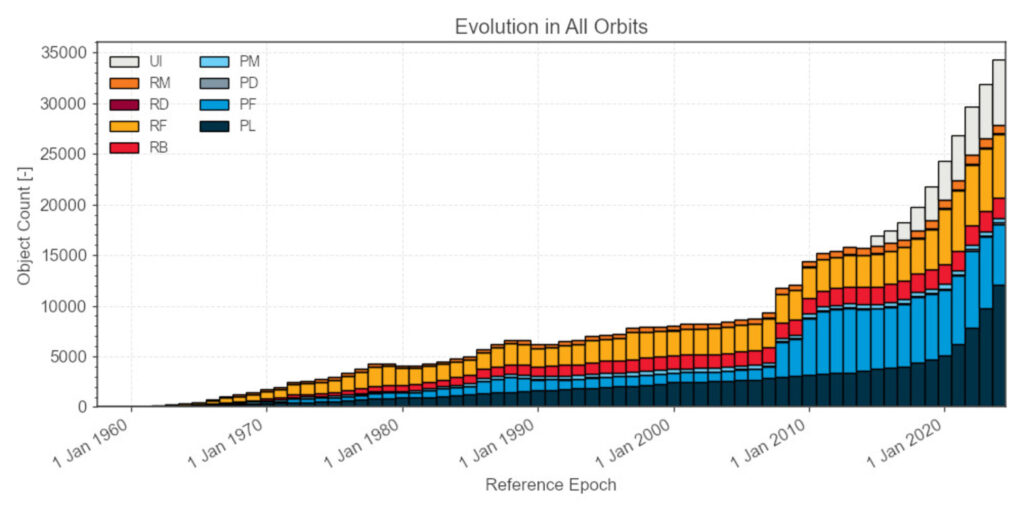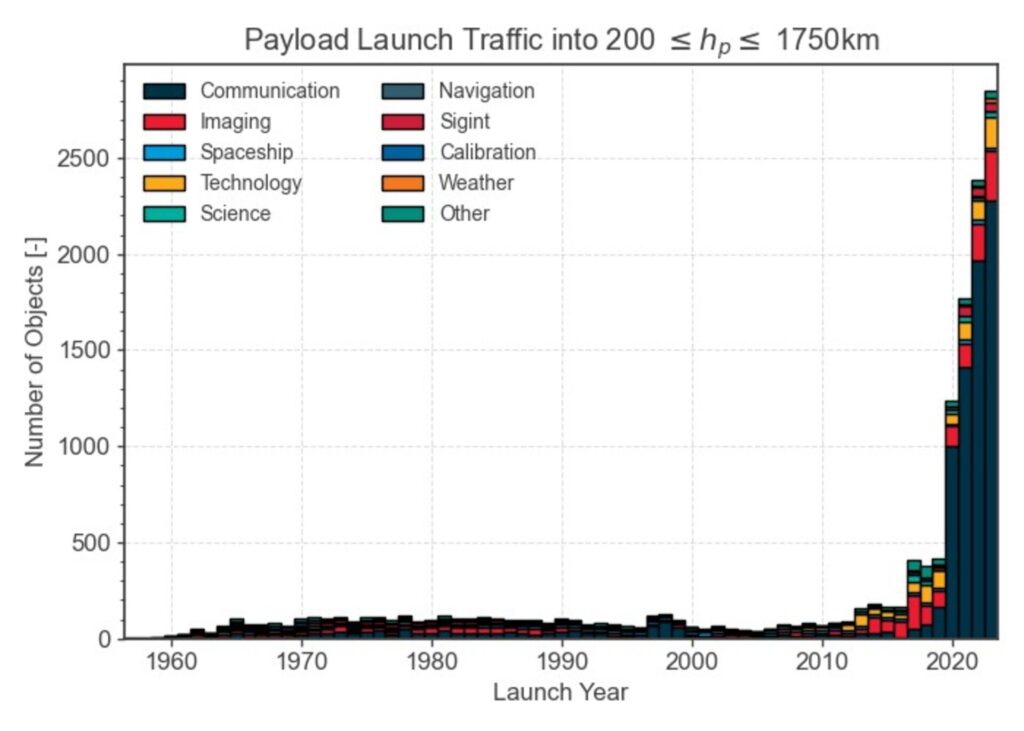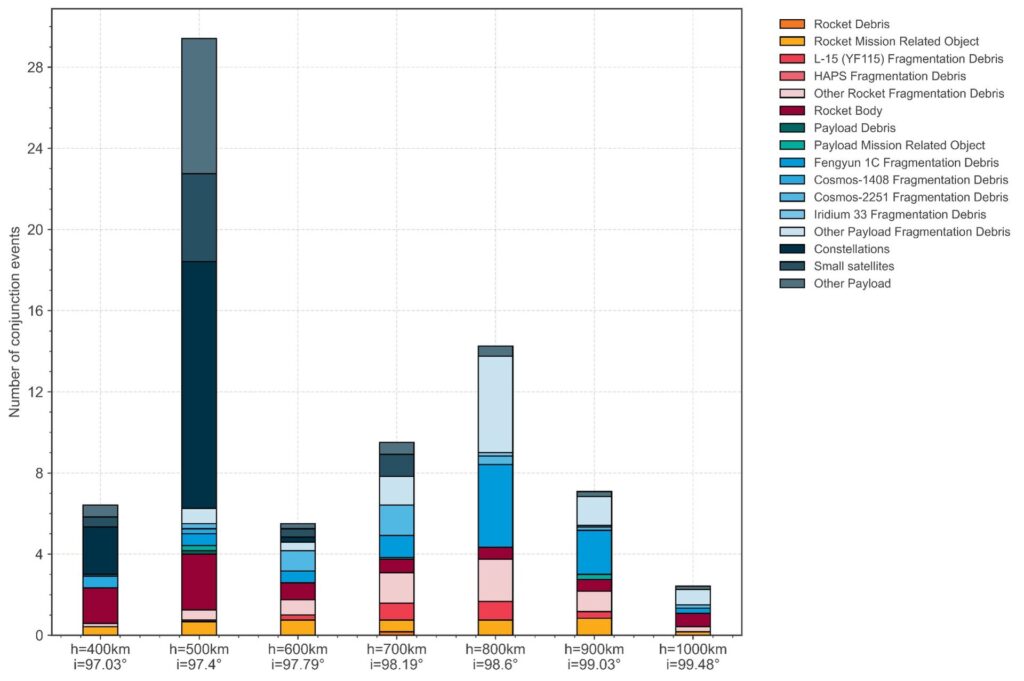ESA’s Space Debris Department has released its annual report on the situation in Earth orbit. It demonstrates the continuation of trends of recent years, which already in the near future may lead to unfavorable consequences for the world space industry.
Record number of satellites
In 2023, the number of objects in Earth orbit reached a record high. ESA tracking instruments have recorded more than 35 thousand objects with a diameter of more than 10 cm. 9,100 of them were working satellites, the other 26,000 were space debris. At the same time, its real number is much higher. Experts estimate that there are over a million pieces of debris with a diameter of 1 to 10 centimeters in orbit now.

The record number of payload launches is the main contributor to the growth of the Earth orbit workload. The year 2023 broke the previous year’s record for the volume of cargoes launched. The vast majority of them are satellites of large commercial communications constellations, mainly Starlink.

Two-thirds of all active satellites (more than 6,000) are currently located at altitudes of 500 to 600 km. This trend will continue in the future, as most of the new satellites launched in 2023 are also headed to these orbits.
Increasing collision risks in orbit
The growing number of satellites and space debris leads to an increase in the number of potentially dangerous orbital rendezvous. In turn, this increases the risks of catastrophic collisions. They can lead to the so-called Kessler Syndrome. This is a chain reaction of collisions that will make some of the near-Earth orbits unusable for a long time. The orbital echelon of 800 km is now considered the most dangerous in this respect. Many old communication satellites are located there. At the same time, at this altitude, the Earth’s atmosphere has almost no effect on spacecraft, so they will be able to stay there for hundreds and thousands of years.

According to the ESA report, efforts to comply with space debris mitigation regulations have also increased in recent years. Currently, about 90% of launch vehicles in low-Earth orbit leave in accordance with current standards. At the same time, more than half reenter the atmosphere in a controlled manner. The number of satellites being de-orbited has also increased. Another important factor is the current increase in solar activity. It leads to an increase in atmospheric drag, which helps accelerate the orbital descent of objects.
However, even all these factors are not enough to reverse the overall trend. Even if humanity were to completely stop all launches now, the population of space debris would still continue to grow due to collisions between already launched objects. In this situation, the only option to solve the problem is to take active measures to clean up the orbit and vault the most dangerous fragments of space debris.
According to ESA


